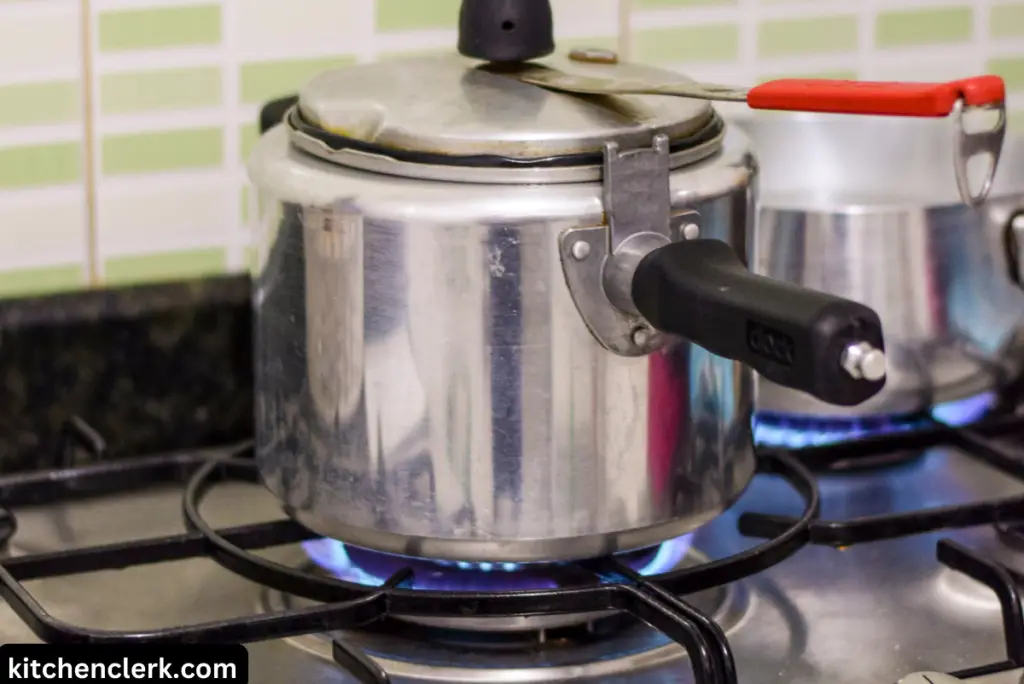Have you ever experienced the frustration of dealing with a melted valve on your pressure cooker? It can be a perplexing situation, leaving you wondering why it happened and how to prevent it from occurring again.
As an expert in the kitchen and a seasoned professional, I’ve encountered this issue firsthand and have extensively researched the causes behind it.
In this blog post, I will delve into the reasons why pressure cooker valves can melt and provide valuable insights on how to avoid this mishap.
So, grab a cup of tea and join me as we explore the world of pressure cooker valves. Whether you have experienced a melted valve or simply want to ensure it never happens, this post is here to help.
What Does the Pressure Cooker Valve Do?

The valve is a crucial component that regulates the pressure inside the cooker. It releases excess steam to maintain the desired pressure level, preventing the cooker from reaching unsafe levels. Valves also act as a safety mechanism, ensuring that the pressure cooker doesn’t explode.
Why Do Valves on Pressure Cookers Melt?
1. High temperature and melting point
One major reason why valves on pressure cookers melt is the high temperature they are exposed to during cooking. The internal temperature of a pressure cooker can reach up to 250°F or higher.
Most common materials used for valves, such as silicone or rubber, have a lower melting point compared to metals. When subjected to prolonged exposure to high heat, these materials can become soft and eventually melt.
2. Poor quality materials
Another factor that can lead to the melting of pressure cooker valves is the use of poor quality materials in their construction. Some manufacturers may cut corners by using low-grade materials that are not heat-resistant.
These subpar materials can degrade quickly under high temperatures, resulting in the melting of the valve. It is crucial to choose pressure cookers from reputable brands known for using high-quality materials in their construction.
3. Overpressure or overcooking
Using a pressure cooker beyond its intended limits can also contribute to the melting of valves. Overpressure occurs when the pressure inside the cooker exceeds the safe operating range.
This can happen if the cooker is filled with too much liquid or if the cooking time is extended beyond the recommended duration. The excessive pressure can strain the valve, causing it to melt under the increased heat and pressure.
4. Faulty sealing or venting mechanism
A faulty sealing or venting mechanism can also lead to the melting of pressure cooker valves. If the sealing ring is damaged or not properly fitted, steam can escape through gaps instead of being released through the designated valve.
This can increase the pressure and temperature inside the cooker, putting additional strain on the valve. It is essential to regularly inspect the sealing and venting mechanisms of your pressure cooker to ensure their proper functioning.
Tips to Prevent Valve Melting in Pressure Cookers
Now that we understand the reasons behind valve melting in pressure cookers, let’s discuss some practical tips to prevent this issue:
1. Choose a high-quality pressure cooker
Invest in a pressure cooker from a reputable brand known for using durable and heat-resistant materials in their construction. Read product reviews and seek recommendations from trusted sources before making a purchase.
2. Follow the manufacturer’s guidelines
Always refer to the manufacturer’s guidelines regarding the maximum pressure and temperature limits for your pressure cooker. Adhering to these guidelines will prevent overpressure and excessive heat that can lead to valve melting.
3. Avoid overfilling
Do not fill your pressure cooker above the recommended maximum fill line. Overfilling can increase pressure and strain the valve, potentially causing it to melt. Leave enough space for food expansion and proper steam circulation.
4. Properly maintain and replace sealing ring
Regularly inspect and clean the sealing ring of your pressure cooker. If you notice any signs of wear or damage, such as cracks or deformation, replace the sealing ring immediately. A faulty sealing ring can disrupt the pressure release mechanism and contribute to valve melting.
5. Monitor cooking time
It is important to follow the recommended cooking time for different types of food. Overcooking can increase the internal pressure of the cooker, potentially causing the valve to melt. Use a timer and closely monitor the cooking process to prevent extended cooking times.
6. Regularly clean and inspect the valve
Clean the valve of your pressure cooker after each use to remove any residue or debris that could obstruct its proper functioning. Additionally, inspect the valve for signs of damage or wear. If you notice any issues, replace the valve immediately to prevent potential accidents.
By following these tips, you can significantly reduce the risk of valve melting in your pressure cooker and ensure its safe and efficient operation.
If you have any more questions or need further assistance regarding pressure cookers or any other kitchen-related topics, feel free to leave a comment below.
